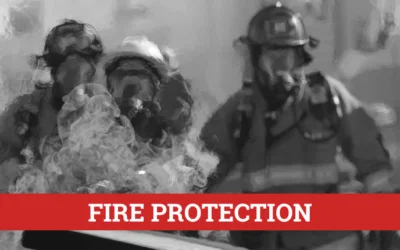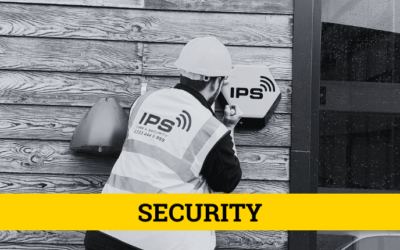
Understanding the Law
Fire Safety Legislation in the UK
In the UK, the Regulatory Reform (Fire Safety) Order 2005 governs fire safety in the workplace. This legislation imposes responsibility for fire safety on the responsible person, who must ensure that the premises are safe from fire risks.
Key Legal Requirements
- Fire Risk Assessment: The responsible person must conduct regular fire risk assessments to identify potential hazards and implement appropriate measures.
- Emergency Plans: Develop and maintain an emergency plan that includes evacuation procedures and employee training.
- Fire Safety Equipment: Ensure fire alarms, extinguishers, and other safety equipment are correctly installed and maintained.
- Training: Employees should receive regular fire safety training, including how to use fire extinguishers, understand workplace fire risks and hazards, and follow evacuation routes.
Fire Statistics Affecting Office Owners
Understanding the impact of fire incidents on businesses can highlight the importance of stringent fire safety measures. According to Home Office statistics, England had approximately 15,005 non-domestic fires in the year ending March 2020. These incidents caused significant property damage and business interruption, emphasising the need for comprehensive fire safety practices.
It’s important to note that many businesses never recover from fires.
Fire Regulation Changes Businesses Need to Know
UK fire safety regulations evolve, and business owners must stay informed about these changes. Here are some recent developments and trends that businesses, particularly office environments, should be aware of:
Regulatory Reform (Fire Safety) Order 2005
- Ongoing Updates: While the core of the Regulatory Reform (Fire Safety) Order 2005 remains the same, continuous updates and guidance ensure that the legislation keeps pace with new risks and technologies.
- Fire Risk Assessments: There is an emphasis on regular updates to fire risk assessments. A review is needed because the RRFSO requires assessments to be up to date with risks and hazards at the time of the assessment. Also, building and layout changes may need a new fire risk assessment.
Fire Safety Act 2021 and Fire Safety Regulations 2022
New fire safety measures were introduced in response to the Grenfell Tower Inquiry, including the following key provisions:
- Clarification of premises coverage (FSA 2021)
- Increased responsibilities for responsible persons (RPs) (FSA 2021)
- Risk-based guidance (FSA 2021)
- General requirements for all multi-occupied residential buildings (FSR 2022)
- Additional requirements for buildings over 11 metres in height (FSR 2022)
- Additional requirements for buildings over 18 metres in height (FSR 2022)
Learn more about the Fire Safety Act 2021 and Fire Safety (England) Regulations 2022.
Technological Integration
- Advanced Fire Detection Systems: Offices increasingly incorporate IoT-enabled fire detection systems, which provide real-time monitoring and quicker response times. These systems include smart smoke detectors and integrated building management systems.
- Digital Record-Keeping: Enhanced emphasis on maintaining digital records of fire safety equipment maintenance, fire drills, and risk assessments to improve transparency and compliance.
Emergency Planning and Evacuation
- Improved Evacuation Procedures: Recent guidance emphasises the importance of clear, well-practised evacuation plans. These plans include regular fire drills and ensuring all employees know evacuation routes and procedures.
- Personal Emergency Evacuation Plans (PEEPs): Ensure that specific evacuation plans are in place for individuals needing assistance during an evacuation, such as those with disabilities.
Sustainable Fire Safety Practices
- Eco-Friendly Fire Safety Solutions: Encouraging sustainable fire safety measures, such as eco-friendly fire extinguishers and materials, which align with broader environmental goals and regulatory encouragement.
Talk to us about a fire risk assessment
Can Office Owners/Administrators Conduct a Fire Risk Assessment?
Current guidance does not recommend you conduct your own fire risk assessment (FRA) unless it is the simplest of buildings with minimal risks. The FRA has to account for all ‘relevant persons’, including persons other than employees. Conducting a fire risk assessment involves several steps:
- Identify Fire Hazards: Examine the workplace to identify ignition, fuel, and oxygen sources.
- Identify People at Risk: Consider all employees, visitors, and anyone at higher risk, such as individuals with disabilities.
- Evaluate and Remove Risks: Assess the level of risk and implement measures to eliminate or reduce them.
- Record Findings: Document the hazards identified, actions taken, and the individuals responsible.
- Review Regularly: Regularly review and update the fire risk assessment to account for changes in the workplace.
Essential Fire Safety Measures
Fire Detection and Alarm Systems
Install and maintain relevant fire detection and alarm systems to ensure early warning of a fire. Regular testing and maintenance are crucial to ensure these systems function correctly.
Fire Extinguishers
Equip your office with the appropriate types and numbers of fire extinguishers. Then, train your employees to use them in a fire.
Emergency Lighting
Where required, ensure clear signage and determine if you need to install emergency lighting to provide illumination during an evacuation.
Evacuation Routes
You need to clearly mark evacuation routes and keep them free of obstructions. Conduct regular drills to ensure all employees know the evacuation procedures. Businesses with a high staff turnover need to maintain regular training sessions for new starters.
Fire Doors
Determine how many fire doors the building needs to help contain the spread of fire and smoke. Crucially, these doors should remain closed and never propped open once installed.
Additional Fire Safety Tips
Electrical Safety
Ensure that all electrical installations are safe and comply with regulations. Regularly inspect and maintain electrical equipment to prevent malfunctions that could cause fires.
Safe Storage
Store flammable materials safely and away from ignition sources. Ensure that storage areas are well-ventilated and compliant with safety standards.
Housekeeping
Maintain a clean and tidy workplace to minimise the risk of fire. Remove waste regularly and keep walkways and exits clear.
Fire extinguisher guide
Keep your people safe with us
Learn about the fire extinguishers variants and how they help extinguish the various fire types.
What You Should Do
- Stay Informed: Keep up-to-date with the latest fire safety regulations and best practices.
- Engage Employees: Foster a culture of fire safety awareness among employees through regular training and communication.
- Regular Inspections: Conduct regular inspections and maintenance of fire safety equipment and systems.
- Plan and Prepare: You must ensure a clear emergency plan exists and conduct regular drills to ensure everyone knows what to do in case of a fire.
By following these guidelines, business owners in the UK can create a safer work environment, protect their employees and assets, and ensure compliance with fire safety laws. Remember, proactive fire safety measures not only save lives but also safeguard the continuity of your business.
Are you the person responsible for fire safety in your workplace who needs help with your fire safety obligations? We can help you protect your staff, business, and customers. Call us today at 0333 4 555 999 to discuss your fire safety needs.




